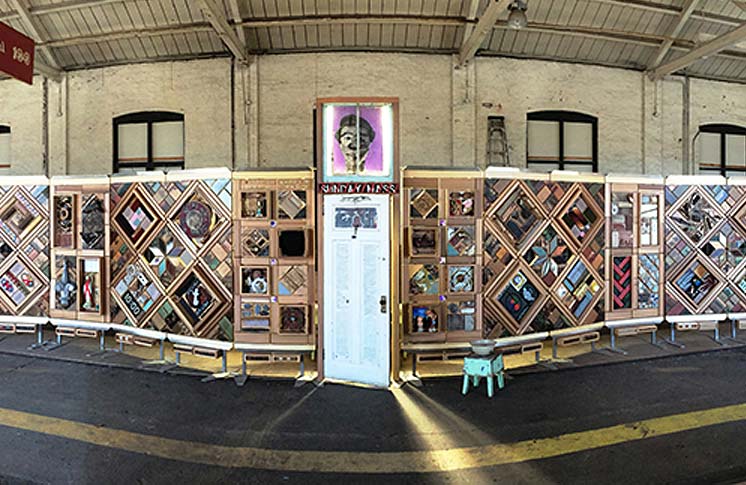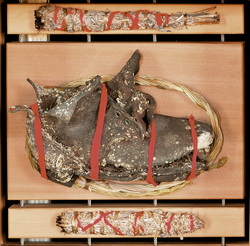
The Witness Blanket | Image Source: yourdailycap.ca
Education is a key component for reconciliation to have its deepest impact. In wake of the Truth and Reconciliation findings exposing the cultural genocide of thousands of Indigenous youth, Coast Salish artist, Carey Newman, created The Witness Blanket. Its a piece that has woven together 12 metres of historic objects from residential school survivors.
Newman (Kwagiulth/Coast Salish), is “a contemporary artist with a traditional soul.” He has mastered many art techniques and mediums such as wood, stone, gold, steel, bronze, silver, gems, glass and painting. Newman owns Blue Raven Gallery on Vancouver Island which showcases his and his parents artwork. In 2008 he was selected to be the master carver for the Cowichan 2008 Spirit Pole, a project associated the the North American Indigenous Games.
It was in early 2011, Newman heard about a Request for Proposals by the Truth and Reconciliation Commission for commemoration initiatives dealing with the Indian Residential School Era. He states, “My father is a residential school survivor and for that reason I was immediately drawn to the idea.” Growing up he never knew much about his father, he says “until we went to counselling to work out our differences. Since then, over the years, through reading and hearing the stories of other survivors, through building this blanket, I have learned more about what happened in those schools.”

Inspired by a woven blanket Newman “weaved” together over 800 artifacts collected from residential schools, churches, government buildings and traditional and cultural structures. Each piece has a story behind it. Alone they represent fragmented cultures, segments of language, diminished pride and crumbling buildings. Together, they tell the true story of loss, strength, reconciliation and pride. When a team member collected a little shoe from a burned down residential school in Carcross, YK, she reported waking up kicking and feeling a presence in her hotel room that night. The next night, at home, her husband, who didn’t know that the shoe was there, had the same experience. Newman reveals that “when I held it in my hands for the first time, I wept. I could feel the fear, the anger and the confusion. I did the only thing I could think to do and began to tell the shoe my story… out loud. What I was doing, who it was for. I asked for forgiveness and permission. It taught me how to respect the work that I was doing.”
The Witness Blanket was created to encourage people to learn more about the ongoing impacts of residential schools. Newman says, “The pieces that make up the blanket are the most tangible contact that many Canadians will ever have with a residential school. I hope that it encourages conversation and fosters cross cultural relationships in each community that it visits.”
The blanket will tour each province and territory in Canada for seven years. So far it has been displayed in Regina SK, Calgary AB, Ottawa ON and now Hamilton ON. Once the tour is over the home of the blanket will be the National Centre for Truth and Reconciliation at the University of Manitoba. The Witness Blanket will be displayed at the Central Hamilton Public Library, 55 York Blvd, Hamilton, ON until August 29, 2015.

Carey Newman Bio
With a strong belief in the importance of tradition, Carey is active within his culture, a role for which he has been given the traditional name Ha-yalth-kingeme. Under the influence and support of his father and mother, Carey developed his artistic ability and cultural knowledge from an early age. His father Victor, his great, great grandfather Charlie James, and his great aunt Ellen Neel, all renowned wood carvers, each contribute to the artistry in his blood. Being of British, Kwagiulth and Salish descent, Carey has been able to draw upon each of these cultures for his inspiration. While this does add a contemporary flare to his work, he is very careful to adhere to traditional rules and values. Finding ways to innovate without disregarding history is extremely important to him. Carey is always looking for ways to improve his artistic repertoire.









